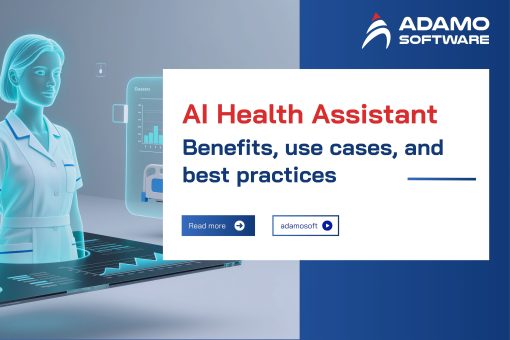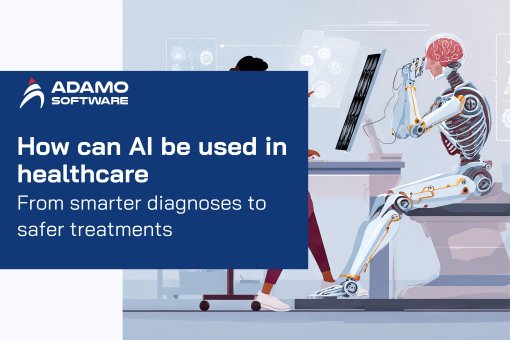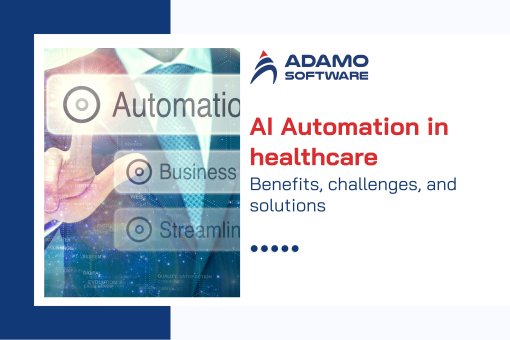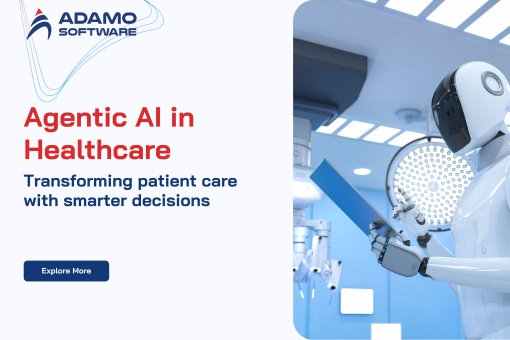Digital Health Records Demystified: Benefits, Challenges & Future
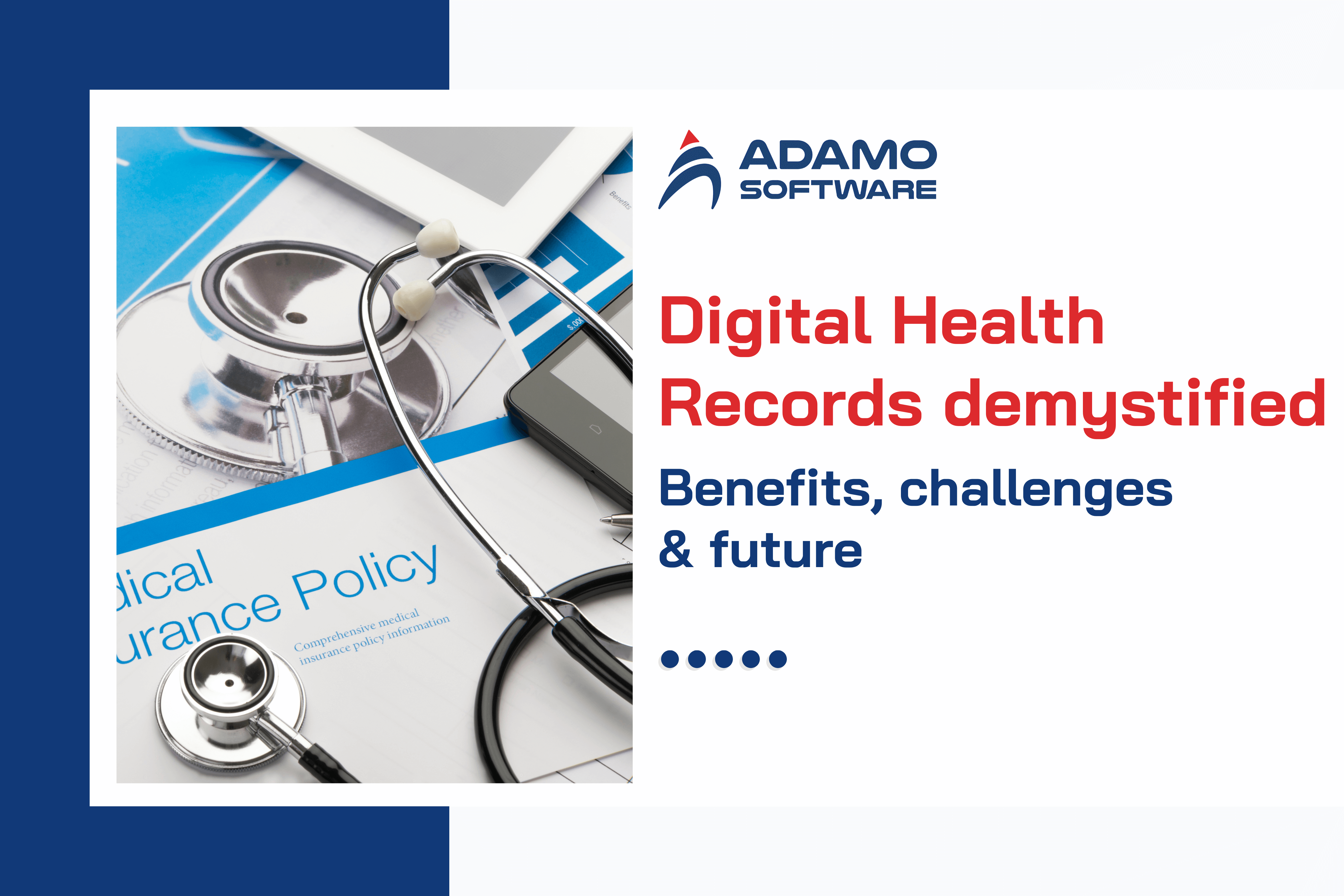
Digital health records are becoming essential tools in the healthcare industry. Let’s explore these systems with Adamo Software!
In the digital era, many industries have adopted modern technologies in their operation to maximize efficiency. And so does the healthcare industry. The integration of information technology and modern medicine is revolutionizing the healthcare sector. Consequently, digital health records are now a key tool for healthcare facilities seeking to improve patient care, satisfaction, and internal processes.
These systems facilitate rapid, precise, and streamlined information access, enabling thorough diagnosis, treatment, and patient care. Let’s learn about digital health record systems with Adamo Software!
Through this blog post, you will get some insights about the definition of digital health records, the benefits of these systems, and how you can adopt these systems into your practice. Besides, you can claim that these systems are safe and compliant.
Additionally, this blog post also discusses common challenges when you integrate digital health records into your existing systems and the future of the digital health record systems. All information has been thoroughly researched and updated to the latest trends. So, let’s read our post and find you some useful information!
I. What are Digital Health Records?
Digital health records are a digital system that helps to store patient medical data. This system digitizes records, improving health data management and security. Patient records include comprehensive medical history, like prescriptions, tests, and diagnoses. These systems provide quick access to patient records, improving care quality. Digital health records include EHRs, EMRs, and PHRs. Let Adamo Software briefly discuss each type.
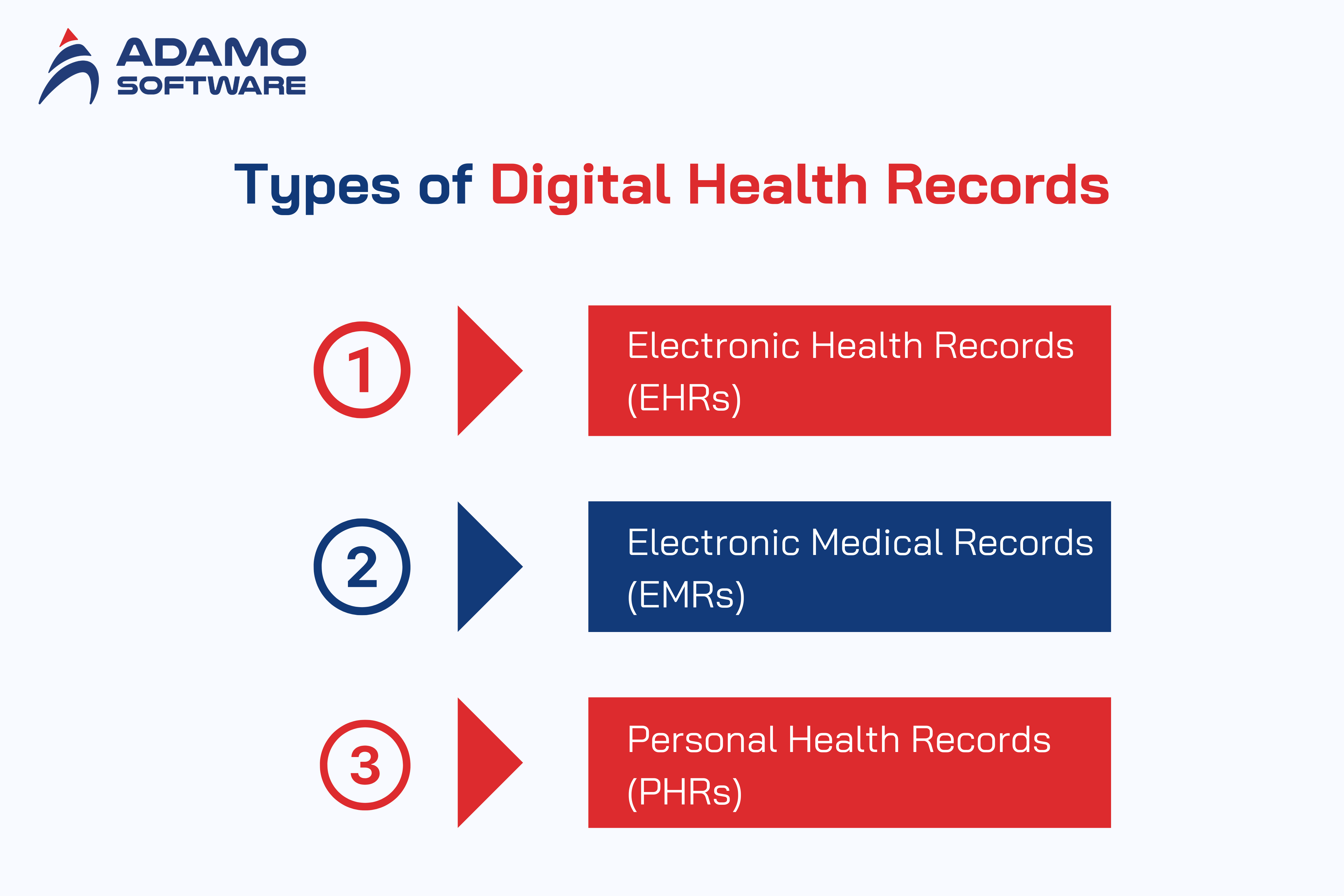
1. Electronic Health Records (EHRs)
Electronic health records (EHRs) are digital health records commonly used by healthcare facilities. It is a collection of an individual’s health data stored on an electronic system. Every individual can have a comprehensive digital health record, containing important information such as demographics, medical history, prescriptions and treatment regimens, doctor’s notes, test results, etc. Also, medical histories and diagnoses are stored in the EHR.
Electronic records are accessible to both public health care providers and owners. It is not simply an electronic version of traditional paper records but also a comprehensive health information system, integrating many functions to effectively support diagnosis, treatment and health care. EHRs streamline healthcare processes by allowing doctors to make real-time updates without the need for traditional hard copies. At the same time, EHR also helps notify patients of scheduled tests and easily track prescriptions.
2. Electronic Medical Records (EMRs)
Electronic Medical Records (EMRs) are another type of digital health records, which is also a useful tool for healthcare facilities. EMR refers to medical records that a particular healthcare facility privately owns. It can be a hospital, a polyclinic, or a specialist clinic. With the ERM systems, medical centers can store and manage all patient information digitally. They contain patient details like name, address, medical history, and test results. Doctors use EMR data to diagnose and treat patients. Complete EMR documentation ensures proper patient care across facilities. Healthcare facilities can improve care and manage records better with EMRs.
EMRs digitize patient records, allowing healthcare providers to easily search and find information. Besides optimizing the working process, EMR systems also improve the accuracy and security of information. The automated EMR system enables medical staff to enter and retrieve information quickly, improving work efficiency. This is especially useful in large medical facilities where there are a large number of patients and records.
3. Personal Health Records (PHRs)
Personal Health Records (PHRs) are also one type of digital health records. Unlike the above digital health records systems, patients will manage the PHRs themselves. Using this tool, patients can monitor their health condition and data like allergies, medications, and relevant medical history. With information access, patients can actively manage their health decisions. PHRs combine doctor visit info, lab results, and self-tracked data.
No matter which type of digital health records that healthcare facilities use, patient data is the most important factor in the record. Digital health records offer comprehensive, real-time patient health information. This facilitates quick, informed healthcare decisions.
You can explore more about Digital health platform development: A comprehensive guide here.
II. Benefits of Digital Health Records for Healthcare industry
Digital health records significantly reform and improve healthcare quality. These systems greatly benefit the healthcare industry. Let’s explore some outstanding benefits of digital health records for the healthcare industry with Adamo Software!
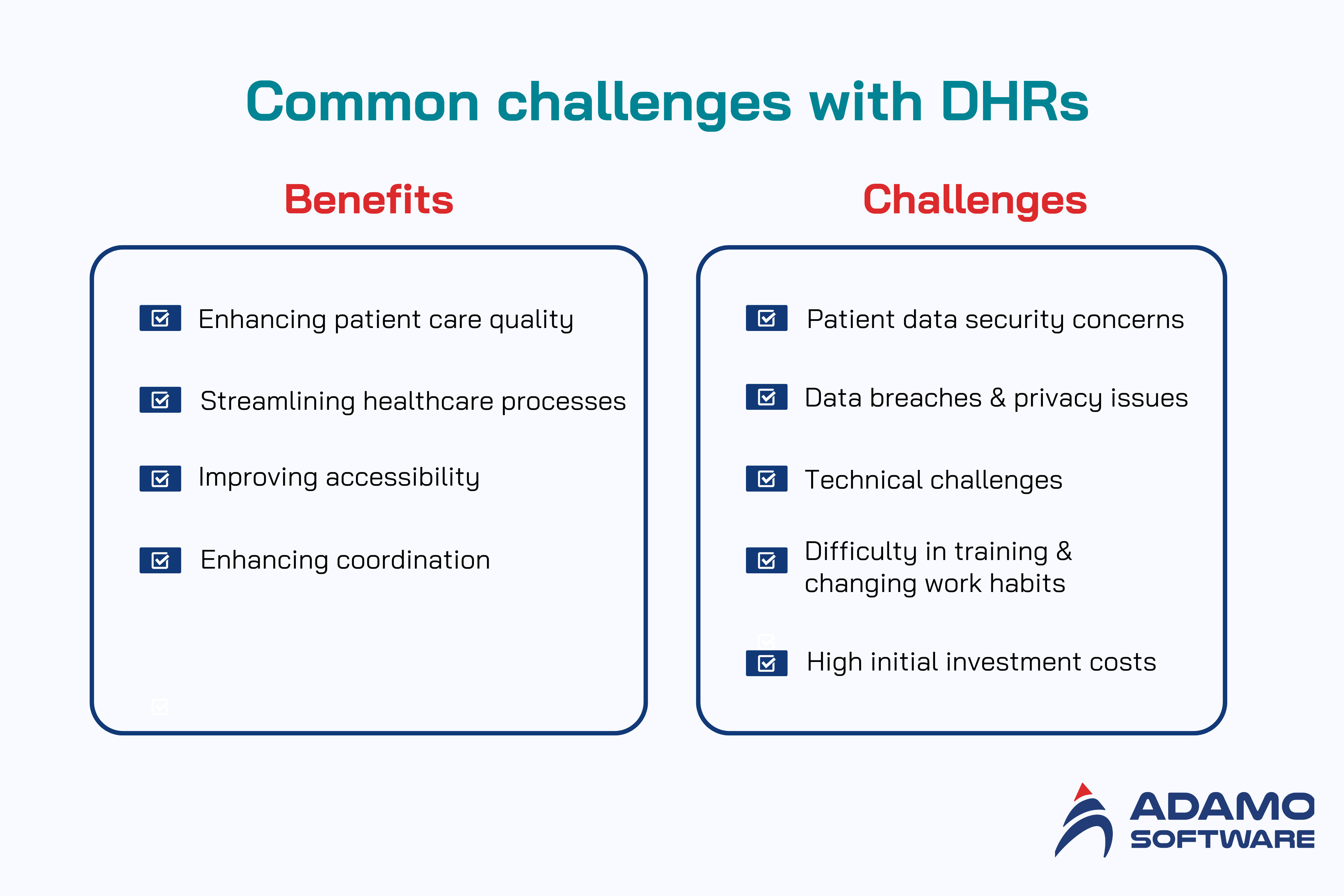
1. Enhancing patient care quality
Enhancing patient care quality is a benefit of digital health records. These systems improve care quality with accurate, timely data. With access to complete patient data, doctors make more accurate treatment decisions. Besides, doctors can make better treatment choices with full access to patient records.
Digital health records provide medical data in real time, right after the patients do the tests required. Therefore, doctors can better understand patient health, track treatment, and manage prescriptions. Additionally, patients can easily access results, appointments, and doctor communication through the portal. This enhances understanding and collaboration in treatment.
2. Streamlining healthcare processes
Digital health records streamline healthcare workflows, reducing record processing time and improving facility efficiency. Digital data lowers medical center operating costs. Digital health records enable healthcare facilities to manage patient information more efficiently and securely than paper documents. This optimizes workspace and reduces printing, storage, and transport costs.
In addition, the digital health records systems streamline operations by integrating with automated appointment scheduling, billing, and prescription management. This improves decision accuracy and reduces manual steps. The digital health records contribute to cutting down cumbersome administrative procedures. This enables healthcare professionals to prioritize patient care.
3. Improving accessibility and coordination
improve collaborative care through remote access, essential for emergencies. This streamlines care coordination when patients move between hospitals or require multiple specialist consultations.
Besides, digital health records also improve coordination within and between medical centers. Real-time patient data updates ensure consistent and accurate information for all healthcare professionals. This reduces errors and redundancies, improving treatment. Digital health records ensure secure and seamless data exchange among hospitals, clinics, and testing facilities. Therefore, patients can avoid paper records and repeat tests when changing facilities. This saves time, reduces medical costs and ensures continuity of care without interruption.
Additionally, patient portals empower individuals to access their health records. This promotes active patient participation and better communication.
III. Common Challenges with Digital Health Records
While digital health records bring many benefits to healthcare facilities, implementing this system has to face many difficulties. Below are some common challenges with digital health records.
1. Patient data security concerns
When implementing digital health records, you must focus on patient data security. Although the system benefits patients, many people may have concerns regarding unauthorized access or misuse of their personal information. Without proper security, patient data can be easily misused or exploited, potentially without patient awareness. This can reduce patient trust in the digital health system.
2. Data breaches and privacy issues
Healthcare data breaches are one of the biggest threats when implementing digital health records. Hackers can compromise systems to steal patient information and use it for bad purposes. Additionally, if access is not tightly controlled, data can be leaked internally by healthcare workers or third parties. This breaches patient privacy and can result in severe legal consequences for the healthcare facility.
3. Technical challenges
Implementing digital health records requires a solid technology infrastructure; however, not all medical facilities can afford to invest. Integrating the new system with existing medical software can be difficult for small hospitals and private clinics. Additionally, if the system is not well optimized, data access speed may be slow, affecting the work performance of doctors and medical staff.
4. Difficulty in training and changing work habits
Changing work habits is a major barrier to digital record adoption. The transition to an electronic system may present challenges for physicians and nurses who have traditionally relied upon paper-based documentation. Without adequate training, data entry errors can occur, compromising the quality of patient care.
5. High initial investment costs
High initial investment costs are also among the challenges for healthcare facilities when implementing digital health records. This implementation requires a large investment in software, hardware, system maintenance, and staff training. For large hospitals, these costs can be balanced within the operating budget. However, for small clinics or medical facilities with limited financial resources, the initial cost can be a significant barrier. Without proper investment planning, medical facilities may have difficulty maintaining and upgrading the system over time.
IV. How to Transition to Digital Health Records in Your Practice
Digital health records adoption extends beyond simple technology changes. Strategic planning is essential for digital transformation. Let Adamo Software discuss the important steps to transition to digital health records in your practice.
1. Evaluating the needs and find a suitable system
Before implementing digital health records, you must evaluate your needs. Begin with a comprehensive records review. This involves considering the number of patients, operating scale, and security requirements. You may want to organize records for transfer, archiving, or removal. Once you have identified your needs and necessary documents to transition, you can now select a digital system for patient data storage. This system must be adapted to your existing systems and comply with security standards.
2. Preparing your data
Data preparation is essential for digital health records transition. You should digitize patient records, test results, prescriptions, diagnoses, and treatment histories. This helps you plan for data entry volume and avoid omissions.
Standardization is crucial to address potential duplicates, data entry errors, and outdated information found in paper documents. You must review, remove invalid data, and update patient information with current details prior to data entry. This ensures accurate, long-term value in digital health records.
3. Investing in training and support
Investing in training and support also plays an important role in digital health records transition. Healthcare workers need training in the digital health records system. You may want to begin with hands-on training to familiarize staff with the new system.
Following that, the training sessions may focus on the correct entry, retrieval, and processing of medical data. Besides, training must also cover security protocols, data access compliance, and incident response protocols. This ensures effective system use and patient confidentiality.
4. Implementing the system and testing
Next, you will implement the digital health records system and test if it can be used smoothly. You will not have to change the whole system at the same time. Instead, let’s divide the process into different phases. This facilitates a more seamless transition and minimizes disruption. By gradually transitioning, you can evaluate the system and identify issues before full implementation.
During testing the digital health records system, you must closely monitor the system performance. Some key metrics include system speed, data accuracy, compatibility, and user satisfaction. To avoid potential consequences, you may want to resolve critical errors like data, usability, and security promptly. After successful tests, you can deploy the system to the whole healthcare facility. You may want to implement a plan for expansion with infrastructure, support, and staff training.
5. Monitoring and optimizing performance
After deployment, it is crucial to maintain close monitoring of system performance and consistently gather feedback from medical staff. This allows for workflow adjustments to optimize efficiency. In addition, you may want to secure patient data with encryption, access control, and backups.
Ready to Outsource?
Get top-tier IT talent without the hassle. Contact us now!
V. Are Digital Health Records Secure and Compliant?
Can I feel safe when I use digital health records? Do these systems follow the law’s regulation? Yes. Digital health records protect privacy and ensure legal compliance. Thanks to advanced encryptions, patient data can be protected. A person can only access the data if they get the authorization. All medical data, including stored data and data transmitted between different healthcare systems, is encrypted using robust protocols. MFA or RBAC are used to limit patient data access to authorized personnel.
Besides, digital health records must comply with international security and legal regulations, including HIPAA in the U.S. and GDPR in Europe. These standards protect patient data from misuse. Moreover, digital health records systems are equipped with cybersecurity monitoring to identify and prevent cyber threats. The system can detect and alert people to suspicious activities, including unauthorized access and unusual behavior, to prevent security threats.
In general, digital health records are secured and designed to comply with strict healthcare security regulations. The combination of encryption technologies, access controls, and security monitoring ensures patient information is secure from intrusion and data loss. Simultaneously, compliance with international standards ensures reliable and transparent management of medical data.
VI. Future of Digital Health Records
Digital health records are more developed thanks to modern technology. In the future, these systems will be more accessible and more focused on the patient’s experience. Below are three main trends of digital health records in the future.
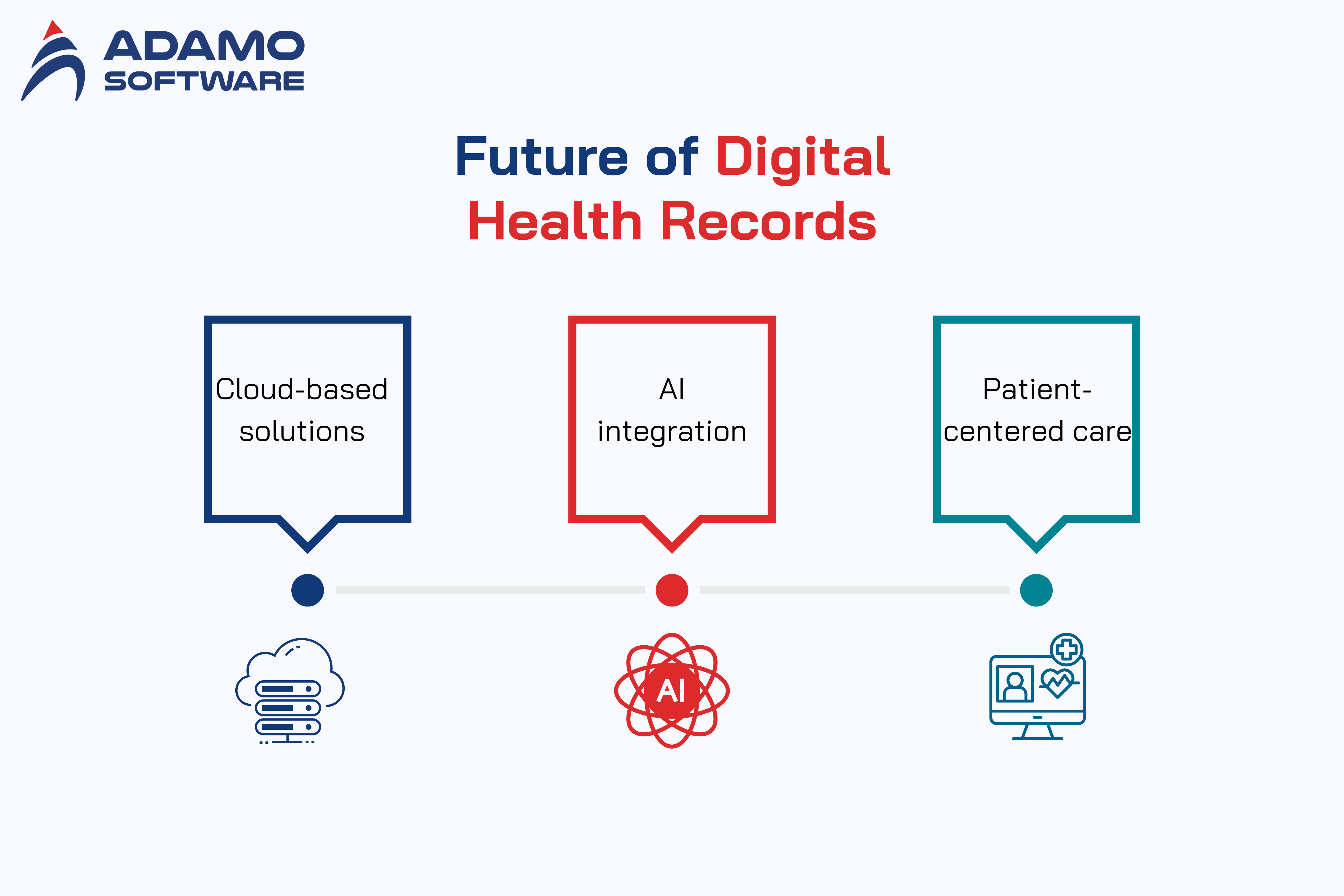
1. Cloud-based solutions
Cloud-based solutions are fundamentally altering healthcare data storage and access, empowering providers with improved flexibility and scalability. The ability to access healthcare data anytime, anywhere, proves particularly beneficial for organizations managing multiple locations. Besides, cloud-based solutions also help to reduce initial investment costs, enhance security, and ensure data is always backed up securely.
Besides, cloud-based digital health records can be easily expanded and integrated with other medical platforms, such as smart medical devices or personal health monitoring applications. This allows patients and doctors to monitor their health status in real time, improving the quality of treatment.
2. AI integration
Artificial intelligence (AI) plays an important role in optimizing digital health records systems. It can automatically analyze medical data to make predictions, helping doctors diagnose diseases more quickly and accurately. In addition, this technology can help identify patient health trends, thereby providing early warnings of potential risks.
Another important application of AI in digital health records is the automation of administrative processes. AI chatbots can help patients make appointments, remind them to take their medications, or answer common questions about their medical conditions. This helps reduce the workload for medical staff, while improving the patient experience when using digital health services.
3. Patient-centered care
Digital health records are transforming to prioritize patient-centered care, resulting in increased individual control over health data. Patients are empowered to access their records, monitor their health, and communicate directly with providers through secure online portals. This approach promotes increased patient engagement, resulting in improved treatment adherence and enhanced health outcomes. Digital health records are key to transparent and accessible health information.
In general, digital health records are more developing thanks to cloud computing, artificial intelligence, and human-centered patient care models. These trends help improve the quality of medical services and bring convenience and safety to both patients and doctors.
VII. Why choose Adamo Software to develop your Digital Health Record Systems
Implementing digital health records requires a technology partner with deep digital health expertise and the ability to provide customized solutions to each organization’s specific needs. As one of Vietnam’s leading healthcare software development companies with many years of experience working in medical software development, Adamo Software can be your reliable partner. Here’s how we can help.

1. Developing custom digital health records
Adamo Software provides a custom DHR solution that fits the workflow of each medical facility. Instead of using available software with many limitations, we can help you design and build a flexible system that integrates necessary features. These features include storing and managing patient records, electronic medical records and electronic prescriptions, integrating with health insurance and payment systems, automating the scheduling process and monitoring treatment, etc.
2. Ensuring security and regulatory compliance
Adamo Software applies international security standards such as HIPAA, GDPR, HL7, FHIR to ensure that patient data is always strictly protected. Besides, the system is also integrated with end-to-end data encryption to prevent unauthorized access, multi-factor authentication (MFA) for medical staff, auditing logs to detect suspicious behavior.
Adamo Software can help you build a basic DHR system and integrate advanced technologies such as artificial intelligence (AI) and cloud-based solutions to improve operational efficiency. AI supports diagnosis and analysis of medical data, helping doctors make more accurate decisions. Cloud systems help access data anytime, anywhere, facilitating a remote healthcare model.
3. Support for system deployment, maintenance and expansion
Digital health records require long-term support to ensure the system operates stably and can be expanded in the future. Adamo Software can consult on deployment strategies suitable for the scale of the group. Besides, we also guide and train medical staff to use the system effectively.
Still hesitating whether to choose Adamo Software as your partner? Let’s contact us for more detailed information.







